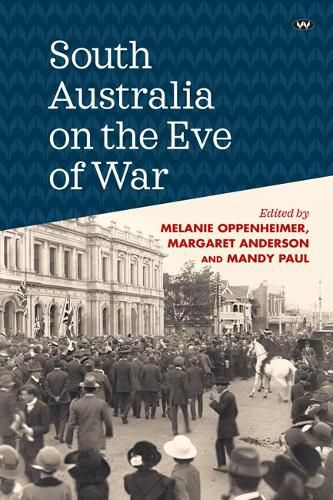Readings Newsletter
Become a Readings Member to make your shopping experience even easier.
Sign in or sign up for free!
You’re not far away from qualifying for FREE standard shipping within Australia
You’ve qualified for FREE standard shipping within Australia
The cart is loading…






In August 1914 South Australians - much like their fellow Australians around the country - enthusiastically displayed their patriotism when war was announced. It’s a story we know well, but what do we know of South Australia in the lead up to the First World War? What was it like to live there at the time? What were South Australians talking about?
South Australia on the Eve of War considers unique aspects of the state in this pre-war period, including the political reverberations of Federation, the town planning of what was then Australia’s third-largest capital, Adelaide, and the shifting social positions of women, Indigenous Australians and minority groups.
These insights help us understand South Australia’s response to the war that would consume the state and its people for the next four years.
With contributions from Melanie Oppenheimer and Margrette Kleinig, John Bannon, Margaret Anderson and Alison Mackinnon, Mandy Paul, Elspeth Grant, Jill Roe, Christine Garnaut, Margaret Allen, Peter Monteath, and Stephanie James.
$9.00 standard shipping within Australia
FREE standard shipping within Australia for orders over $100.00
Express & International shipping calculated at checkout
Stock availability can be subject to change without notice. We recommend calling the shop or contacting our online team to check availability of low stock items. Please see our Shopping Online page for more details.
In August 1914 South Australians - much like their fellow Australians around the country - enthusiastically displayed their patriotism when war was announced. It’s a story we know well, but what do we know of South Australia in the lead up to the First World War? What was it like to live there at the time? What were South Australians talking about?
South Australia on the Eve of War considers unique aspects of the state in this pre-war period, including the political reverberations of Federation, the town planning of what was then Australia’s third-largest capital, Adelaide, and the shifting social positions of women, Indigenous Australians and minority groups.
These insights help us understand South Australia’s response to the war that would consume the state and its people for the next four years.
With contributions from Melanie Oppenheimer and Margrette Kleinig, John Bannon, Margaret Anderson and Alison Mackinnon, Mandy Paul, Elspeth Grant, Jill Roe, Christine Garnaut, Margaret Allen, Peter Monteath, and Stephanie James.